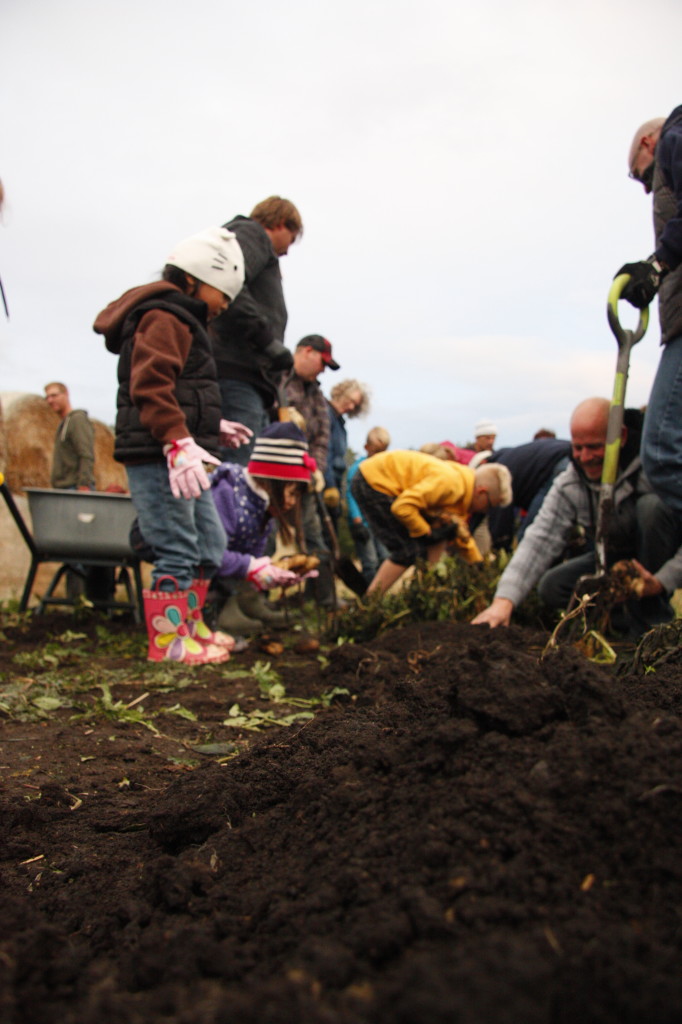
How do you feel about these statements?
- Being excited about becoming a church that plants churches is not the same thing as doing it.
- Picking the low hanging fruit (the already developed seminary student) and sending them out to plant is not the same thing as having a process to develop a new believer into a church planter.
- Setting aside a percentage of your budget for church planting is not the same thing as developing future planters.
What would it look like if God answered Matthew 9:37-38 through your church? How would you feel if God raised up harvest workers and church planters through your church?
Now I know many of you might be thinking, “Yeah, yeah, I get it. I need to start a residency program or an internship program.” But that’s not what I’m talking about here.
This post is about developing a church planting farm system that starts before any type of internship or residency program. This is ultimately about developing the type of leader that you would want to accept into an internship or residency program.
–> Enter: Mid-Size Communities (MSC)
When I started the mid-size community movement at my previous church (you can watch the MSC intro movie here), I said that it was going to be a way to get more people connected into community (which it totally did – 700 more people into community in three years at three campuses). However, the underlying reason I was so passionate about MSCs was because I saw them as a farm system to raise up future church planters. This pervaded the way that I developed the MSC leadership development curriculum, training strategy, roll-out plan, and everything else that accompanied it.
In fact, when you consider what makes up a healthy farm system, there seems to be three common factors:
1. A Comprehensive Scouting System
Leadership development doesn’t work when it’s siloed into someone’s job description. Yes, someone does have to drive the process (the head scout), but if you really want to cultivate a farm system that raises up a movement of harvest workers and church planters, then everyone needs to have the “scout” role as a part of their job description. If this happens, then you have scouting happening in every division and department of your church. If, on top of this, you add matrix meetings where you discuss the developmental paths of your leaders together, then you would be taking this whole thing to another level.
For example, I did not only pick out and exclusively invite the best small group leaders to our MSC leadership development program, but I was also regularly championing the vision and values of leadership development to every other department and division in my church. Did you catch that? I wasn’t just promoting MSCs, I was promoting the vision and values of leadership development. By doing this, I was intentionally cultivating a mindset where we all learned to hold our volunteers loosely and worked towards seeing them develop into roles where they could have their greatest Kingdom impact.
2. Competency Based Curriculum
When creating the leadership development program for MSC leaders, I focused more on developing the competencies of a Kingdom worker and church planter, over and above the particular skills that someone would need to lead an MSC. This doesn’t mean that my training was all theory; rather, it means that my training focused on developing the overarching leadership competencies that would allow someone to perform within that framework.
For example, instead of teaching methods of leading in a particular manner, I helped the students discover their strengths (using Gallup’s StrengthsFinder) so that they would learn how they were best suited to lead. Also, instead of giving the students a trite “three steps to counsel someone,” I gave them an ethical decision making framework that they then used to work through real-life scenario case studies.
Not only did students develop many of the core leadership competencies required to (maybe one day) plant a church, they were also equipped with the tools, resources and skills to successfully lead an MSC upon finishing the training. This included elements like, designing and facilitating an adult-education oriented lesson, determining the requirements for a good team member, and calendaring out the MSC gatherings for the next six months.
3. Developmental Environment
It’s important to have scouts spot out and recruit leaders who have high potential. It’s also important to have a competency based curriculum where those future leaders are growing in their knowledge and skills related to leading, in general, and leading an MSC, in particular. However, once that primary/initial training is done, those leaders need to be embraced into an ongoing developmental environment. In professional sports, that usually translates into elements like team practices, watching reels from previous games, individual coaching, strength development, physiotherapy, and the like.
When individuals finished the MSC leadership development program, some were invited into the primary leadership role of an MSC, others were invited onto a leadership team of an MSC, and for others, we helped them find a better suited role in another ministry. For those who were invited into ongoing MSC leadership, the developmental environment consisted of: monthly coaching meetings, group learning experiences, an online forum, developmental videos, an e-Newsletter, and a guide to their leadership team meals/meetings.
Conclusion
Not only did mid-size communities (MSC) embrace a lot more people into community and get them on mission with God, but they also served as a leadership pipeline for future interns, residents, campus pastors and church planters. After all, in most churches, what other opportunity exists would you can release your volunteer leaders to spiritually lead a group of 20-50 people off-site and make a missional impact in their neighborhood?